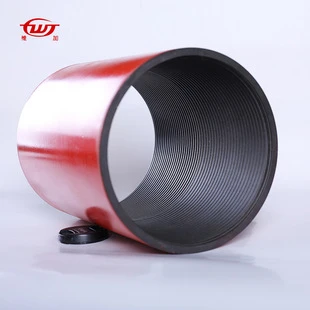- Afrikaans
- Albanian
- Amharic
- Arabic
- Armenian
- Azerbaijani
- Basque
- Belarusian
- Bengali
- Bosnian
- Bulgarian
- Catalan
- Cebuano
- Corsican
- Croatian
- Czech
- Danish
- Dutch
- English
- Esperanto
- Estonian
- Finnish
- French
- Frisian
- Galician
- Georgian
- German
- Greek
- Gujarati
- Haitian Creole
- hausa
- hawaiian
- Hebrew
- Hindi
- Miao
- Hungarian
- Icelandic
- igbo
- Indonesian
- irish
- Italian
- Japanese
- Javanese
- Kannada
- kazakh
- Khmer
- Rwandese
- Korean
- Kurdish
- Kyrgyz
- Lao
- Latin
- Latvian
- Lithuanian
- Luxembourgish
- Macedonian
- Malgashi
- Malay
- Malayalam
- Maltese
- Maori
- Marathi
- Mongolian
- Myanmar
- Nepali
- Norwegian
- Norwegian
- Occitan
- Pashto
- Persian
- Polish
- Portuguese
- Punjabi
- Romanian
- Russian
- Samoan
- Scottish Gaelic
- Serbian
- Sesotho
- Shona
- Sindhi
- Sinhala
- Slovak
- Slovenian
- Somali
- Spanish
- Sundanese
- Swahili
- Swedish
- Tagalog
- Tajik
- Tamil
- Tatar
- Telugu
- Thai
- Turkish
- Turkmen
- Ukrainian
- Urdu
- Uighur
- Uzbek
- Vietnamese
- Welsh
- Bantu
- Yiddish
- Yoruba
- Zulu
Understanding Casing Collars in Oil and Gas Drilling Operations
Understanding Casing Collars An Essential Component in Oil and Gas Operations
In the oil and gas industry, the extraction of hydrocarbons from the earth is a complex process that involves numerous specialized components. Among these, casing collars play a pivotal role in ensuring the integrity and efficiency of drilling operations. Understanding the purpose, design, and application of casing collars can illuminate their significance in maintaining the safety and productivity of well operations.
What are Casing Collars?
Casing collars are mechanical devices used in the oil and gas drilling industry to connect segments of casing string that are inserted into the wellbore. The casing string serves as a protective barrier that prevents the well from collapsing, protects groundwater resources, and helps control the flow of fluids during drilling and production.
Typically manufactured from high-strength steel, casing collars are designed to withstand high-pressure environments that are common in drilling operations. They feature a particular design that allows them to provide a robust joint between the casing sections, ensuring the integrity of the well throughout its lifecycle.
Design Specifications
Casing collars can vary in design based on their specific application and the conditions of the drilling environment. Commonly, they have a thicker wall than standard casing sections, providing enhanced durability. This added strength helps them resist the massive pressure exerted by both the geological formations and the fluids in the wellbore.
Additionally, casing collars can be equipped with various features. For instance, some may include slots or other configurations for additional functionality, such as facilitating fluid flow or providing anchoring capabilities for other equipment. This versatility makes them suitable for a variety of drilling scenarios, from onshore to deepwater applications.
Importance in Well Integrity
casing collar

The primary function of casing collars is to ensure the integrity of the wellbore and the casing columns. During drilling, the casing is subject to various stresses, including axial loads, bending moments, and external pressures. Casing collars help to distribute these stresses evenly across the casing string, thus minimizing the risk of mechanical failure.
Moreover, casing collars also play a crucial role in preventing the intrusion of unwanted fluids and gases into the wellbore. In scenarios where high-pressure zones are present, casing collars help create a seal that isolates these zones from the wellbore environment. This isolation is essential to prevent blowouts, which can have catastrophic consequences for both personnel and the environment.
Installation and Maintenance
The installation of casing collars is a critical phase during drilling operations. Proper alignment and securing techniques are essential to ensure that collars can handle the rigors of drilling. If they are improperly installed, there could be severe impacts on the structural integrity of the well, potentially compromising the entire project.
Routine inspections and maintenance of casing collars are equally important. Over time, wear and tear can compromise their ability to function effectively. Corrosion, fatigue, and other forms of degradation are common threats to casing integrity. Regular monitoring helps identify potential issues early, enabling timely repairs or replacements before they lead to costly failures.
Future Developments
As the oil and gas industry continues to evolve, so do the technologies and materials used in casing collars. Innovations in material science have led to the development of more durable and corrosion-resistant alloys, which enhance the lifespan of casing collars. Additionally, advancements in digital technologies, such as real-time monitoring systems, are being integrated into casing design. These systems provide critical data on the condition of collars during the drilling process, allowing for proactive maintenance strategies.
Conclusion
Casing collars are more than just an accessory in the drilling process; they are a fundamental component that supports the safety and efficiency of oil and gas operations. Understanding their role, design, and importance underscores the complexities of well construction and the continuous efforts to innovate within the industry. As exploration and extraction activities become more challenging and technologically advanced, the significance of reliable casing collars will only continue to grow. Their effective use not only safeguards the structural integrity of wells but also plays a crucial role in protecting valuable resources and the environment.
-
Tubing Pup Joints: Essential Components for Oil and Gas OperationsNewsJul.10,2025
-
Pup Joints: Essential Components for Reliable Drilling OperationsNewsJul.10,2025
-
Pipe Couplings: Connecting Your World EfficientlyNewsJul.10,2025
-
Mastering Oilfield Operations with Quality Tubing and CasingNewsJul.10,2025
-
High-Quality Casing Couplings for Every NeedNewsJul.10,2025
-
Boost Your Drilling Efficiency with Premium Crossover Tools & Seating NipplesNewsJul.10,2025







